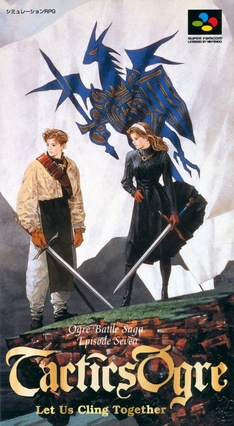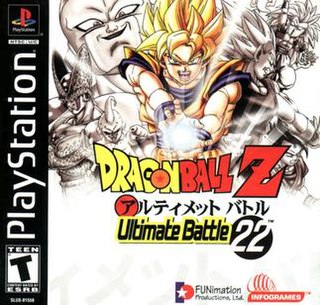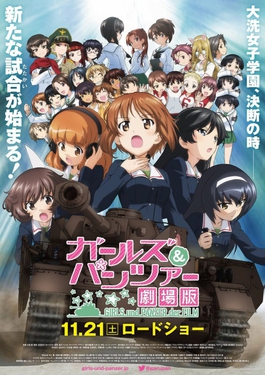
Tactics Ogre: Let Us Cling Together is a 1995 tactical role-playing game developed and published by Quest Corporation for the Super Famicom. It was later ported to the Sega Saturn (1996) and the PlayStation (1997), the latter released in North America in 1998 by Atlus USA. The second entry in the Ogre Battle series, the story takes place in the war-torn kingdom of Valeria, where protagonist Denim Powell works in a local resistance force against occupying powers, ending up caught in the ethnic conflicts driving the war. Battles are turn-based, taking place on grid-based maps from an overhead perspective with a focus on positioning and using character class abilities.

Ardy Lightfoot is a platform game released on the Super Nintendo Entertainment System in 1993 in Japan and 1994 in the west. It was developed by ASCII and published by Titus France in North America and Europe.

Dynamite Headdy is a platform video game developed by Treasure and published by Sega for the Sega Genesis in 1994. The game follows a puppet named Headdy in his efforts to stop an evil puppet king from taking over his world. Headdy can throw his head at enemies to defeat them and use it to pull himself to various areas and move objects. The player can find a wide variety of "heads" which act as power-ups that provide different effects and alter gameplay.

Banpresto Co., Ltd. was a Japanese video game developer and publisher headquartered in Shinagawa, Tokyo. It had a branch in Hong Kong named Banpresto H.K., which was headquartered in the New Territories. Banpresto was a partly-owned subsidiary of toymaker Bandai from 1989 to 2006, and a wholly-owned subsidiary of Bandai Namco Holdings from 2006 to 2008. In addition to video games, Banpresto produced toys, keyrings, apparel, and plastic models.

Panzer Dragoon Orta is a rail shooter game for the Xbox, developed by Smilebit and published by Sega. The fourth Panzer Dragoon game, it was released in Japan in 2002 and in North America and Europe in 2003. The story follows a girl, Orta, who is freed by a dragon and embarks on a quest to prevent the abuse of ancient technology. The gameplay features the player moving an aiming reticle and shooting enemies while the dragon flies through 3D environments on a predetermined track.

Panzer Front is a World War II tank simulation game first released in 1999 in Japan by Enterbrain for the PlayStation and Dreamcast game consoles.

Dragon Ball Z: Ultimate Battle 22 is a 1995 fighting video game developed by Tose and published by Bandai and Infogrames for the PlayStation. Based upon Akira Toriyama's Dragon Ball franchise, its gameplay is similar to the Super Butōden sub-series, consisting of one-on-one fights with a main six-button configuration, featuring special moves, as well as five playable modes. It is referred as "Ultimate Battle 22" or "UB22" by fans due to the roster of twenty two playable characters from the series.

Panzer Dragoon II Zwei is a 1996 rail shooter game for the Sega Saturn, developed and published by Sega. The second entry in the Panzer Dragoon series and a prequel to the original game, the story follows Lundi and his dragon companion, Lagi, as they pursue an airship of the Ancient Age. The player controls an aiming reticle representing the dragon's laser and Lundi's gun, shooting enemies while the dragon travels through 3D environments on a fixed track. Levels can have multiple pathways, and the dragon grows stronger over the course of the game based on the player's score.

CyberConnect2 Co., Ltd. is a Japanese video game development studio mostly known for its work on the .hack series, along with a series of fighting games based on the Naruto franchise. They are also known for creating the Little Tail Bronx series. In 2016, they expanded their workforce into the international market by opening a studio in Montreal, Canada.

Panzer Dragoon is a series of video games developed by Sega. The first three games—Panzer Dragoon (1995), Panzer Dragoon II Zwei (1996), and Panzer Dragoon Saga (1998)—were produced by Sega's Team Andromeda for the Sega Saturn. The fourth, Panzer Dragoon Orta (2002), was developed by Sega's Smilebit team for the Xbox. Spin-offs include Panzer Dragoon Mini (1996) for the handheld Game Gear in Japan. A remake of Panzer Dragoon was released in 2020.
Megamasso was a Japanese visual kei rock band. Their sound was lively and upbeat, with a unique mix of punk, piano ballads and pop rock.

Naruto: Ultimate Ninja, known in Japan as the Naruto: Narutimate Series, is a series of fighting video games, based on the popular manga and anime series Naruto by Masashi Kishimoto. It was developed by CyberConnect2, and published by Bandai and later Bandai Namco Games. The first game was released in 2004 for the PlayStation 2, and was followed by four more titles for the system, as well as five spinoffs for the PlayStation Portable. A follow-up for the PlayStation 3, titled Naruto: Ultimate Ninja Storm, was the first to feature three-dimensional battles, and began the long-running Storm sub-series. While starting out as a series exclusive to the PlayStation family of systems, the series has also been present on Xbox and PC platforms since the release of Naruto Shippuden: Ultimate Ninja Storm 2 for the Xbox 360 and Naruto Shippuden: Ultimate Ninja Storm 3 Full Burst for Windows, respectively. Latest releases were also ported to the Nintendo Switch. The Naruto: Ultimate Ninja series sold over 20 million copies worldwide as of December 2019.

Naruto Shippuden: Ultimate Ninja Storm 2, known in Japan as Naruto Shippuden: Narutimate Storm 2 is a fighting game developed by CyberConnect2. It is the second installment in the Ultimate Ninja Storm series, and the sequel to Naruto: Ultimate Ninja Storm published by Namco Bandai Games. It is based on the anime and manga series Naruto by Masashi Kishimoto, and was released in late-2010 for the PlayStation 3 and Xbox 360. As a sequel to Naruto: Ultimate Ninja Storm, the story and cast are based on their Part II manga appearances, known in the anime as Naruto Shippuden. The game mainly stars title character Naruto Uzumaki, a teenage ninja, and his fights against the Akatsuki terrorist organization.

Girls und Panzer, abbreviated as GuP or Garupan(ガルパン), is a Japanese franchise created by Actas which depicts a competition between girls' high schools practicing tank warfare as a sport.

Girls und Panzer der Film is a 2015 Japanese animated film and a sequel to the 2012 anime series Girls und Panzer. Produced by Actas and distributed by Showgate, the film is directed by Tsutomu Mizushima from a script written by Reiko Yoshida and features an ensemble cast that includes Mai Fuchigami, Ai Kayano, Mami Ozaki, Ikumi Nakagami, and Yuka Iguchi. The film follows the students of Ōarai Girls' Academy learning about the closure of their school after their recent victory against Kuromorimine Girls' High School was denounced.

Hiroshi Matsuyama, born in November 23, 1970 in Fukuoka, is a Japanese game designer. He is the CEO of the company CyberConnect2. He developed multiple games including the .hack franchise as well as adaptations of the anime series including Naruto and Dragon Ball. Besides developing games, Matsuyama has participated in directing two .hack films as well as voicing a character from the series.

Girls und Panzer das Finale is a six-part Japanese animated film series and a sequel to Girls und Panzer (2012) and Girls und Panzer der Film (2015). Produced by Actas and distributed by Showgate, the film series is directed by Tsutomu Mizushima from a script written by Reiko Yoshida and features an ensemble cast from previous installments of the franchise.

Panzer Dragoon Mini is a 1996 rail shooter video game developed by Rit's and published by Sega for the Game Gear. It is a spin-off entry in the Panzer Dragoon series. In the game, the player controls one of three playable dragons across five levels, shooting down enemies with an aiming reticle. Mini was handled by Sega with no involvement from series creator Yukio Futatsugi or Team Andromeda. The soundtrack from Panzer Dragoon II Zwei was adapted by composer Hitoshi Sakimoto. It garnered mixed reception from critics.


















